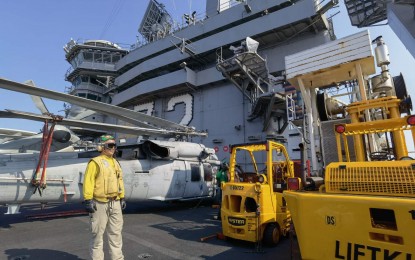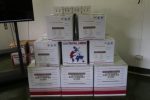Increase military drill between PH-Australia to increase in 2025, Canberra says


File image of a Multilateral Maritime Cooperative Activity (MMCA) between the militaries of the Philippines, the United States, Australia, and Canada in the West Philippine Sea on August 2024. (Courtesy: Armed Forces of the Philippines/ Facebook)
Australia’s Defense Department disclosed that increase military drills, security engagements between the Philippines and Australia will increase this year.
In a statement, Australia’s Chief of Joint Operations Vice Admiral Justin Jones said the Australian government said highlighting the two nations’ expanding and evolving partnership aimed at addressing common maritime and regional challenges.
The Joint Australian Training Team – Philippines (JATT-P) program “will conduct over 20 training activities “between the Australian Defence Force (ADF) and Armed Forces of the Philippines (AFP), more than doubling the number delivered in 2024.
“The Philippines is one of Australia’s most important regional defense partners, and we share a commitment to a peaceful, stable and prosperous Indo-Pacific region,” Jones said.
“The JATT-P program allows us to continue building the strong people-to-people links that support our deep cooperation in defense and security,” Jones said, adding that these activities seek to “broaden interoperability” between the two nations.
Australia and the Philippines—two of the most vocal critics of China’s aggressive actions in the South China Sea—have bolstered security cooperation in recent years.
On Tuesday, Australia turned over P34 million worth of drone equipment to the Philippine Coast Guard to strengthen Manila’s “maritime domain awareness and protection capabilities.”
Manila and Canberra in 2007 signed a Status of Visiting Forces Agreement (SOVFA), which they separately ratified later. The SOVFA, similar to a Visiting Forces Agreement (VFA) between the Philippines and its treaty ally, the United States, has allowed joint training and exercises between Australian and Filipino forces in the country.
Australian soldiers also took part in US-Philippines “Balikatan” or shoulder to shoulder military exercises in the country and joint patrols with the Philippines and other “like-minded” states in the disputed South China Sea claimed by Beijing nearly in its entirety.
Manila refers to the stretch of waters in the South China Sea within Manila’s internationally recognized exclusive economic zone as the West Philippine Sea.
“Our ongoing and deepening interactions with the Philippines signals our commitment to being a major and reliable defense partner in the region,” said Jones.
Established in 2019, JATT-P involves Mobile Training Teams (MTTs) from Australian Defense Forces conducting training activities in the Philippines and provides support to a range of exercises.
Throughout 2025, Jones said the MTTs will engage with several hundred personnel from AFP and representatives of the Department of National Defense, “targeting a specific skillset, mission, or area of military expertise.”
The Australian Defense Department said this would allow both nations “to develop, enable and sustain joint and service combat proficiency in fields.”
“This includes combined joint planning, fire support, combat engineering, maritime sustainment, aircraft maintenance, intelligence analysis, and aviation safety,” it said.
Major Lachlan Newham, Coordinator for JATT-P, said MTTs varies in size and will deliver both field and classroom-based training.
“The 2025 program builds on the success of our previous engagements, encompassing maritime, land and air domains” Newham said, adding “engagement and training in cyber security, as well as logistics and support functions necessary for contemporary operations” will be conducted.
Australia and other Western nations have been stepping up its defense engagements and expanding trade and investments in the Indo-Pacific to promote “rule of law” and to ensure unfettered access to the South China Sea, a global trade route.






